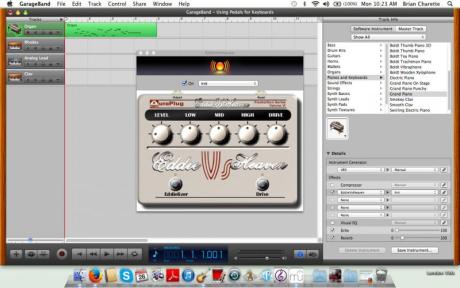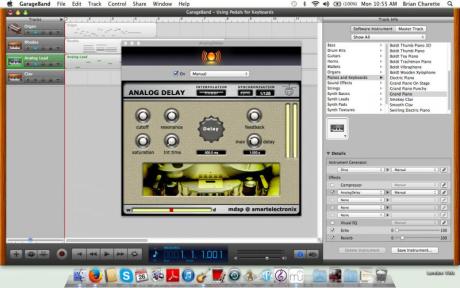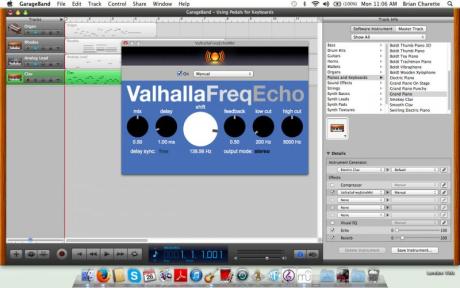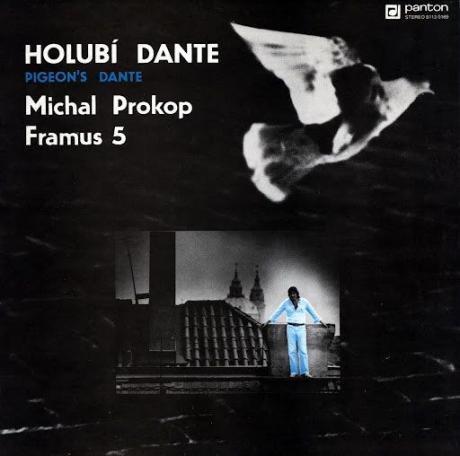Rock Organ X - Using Pedals with Keyboards

Čtenáři, možná vás zaskočí, že na českých stránkách nacházíte anglický text. Není to chyba. V současné době pro časopis Muzikus píše newyorkský klávesista a pianista Brian Charette. A tak jsem si v redakci řekli, že bychom mohli něco udělat pro zlepšení vašich znalostí angličtiny. Určitě nám dáte za pravdu, že angličtina se na pódiích objevuje stále častěji a potřeba domluvit se na pódiu i v zákulisí se stane brzy samozřejmosti. Proto zde naleznete originální verzi přímo od Briana a na stránkách časopisu Muzikus v čísle 11/2013 článek přeložený Petrem Štikou. Navíc zde máte audio ukázky, které do časopisu jaksi přeložit neumíme. Enjoy reading!
šéfredaktor časopisu Muzikus Ing. Vladimír Švanda
In this month's installment I'd like to talk about using stop box guitar pedals with keyboard sounds. I, myself, use all virtual now, so all my pedals will be software, but you will see they work in a very similar way as the real thing. Stomp boxes add lots of flavor to keyboard sounds. Sometimes an unusual effect will add a particular frequency or color that totally makes a track happen. We'll look at four different Keyboard sounds, each with a different effect.

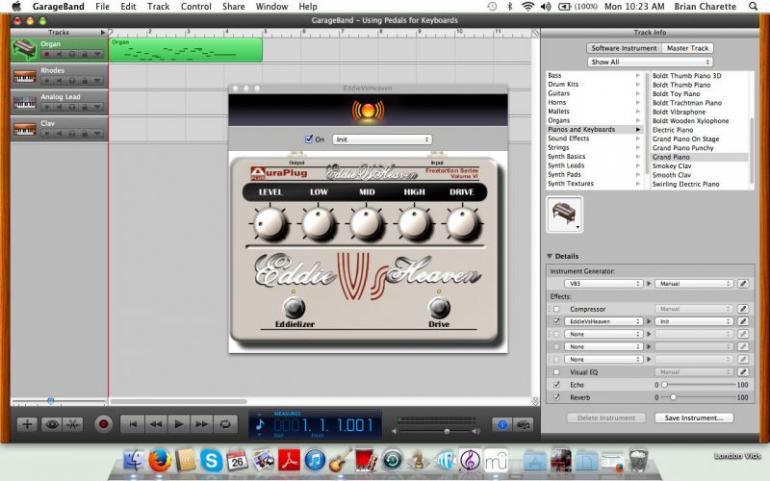
A classic key/pedal combo is Organ with Distortion. For this example, I've picked a very boutique distortion sound. This pedal is a Eddie Van Halen inspired plug in. This particular stomp box adds an unusual harmonic with some flange in the high register to mimic Eddie's screaming harmonics. Distortion is pretty simple. The most important knob is the amount of drive; at low levels you get tubey warmth, and at high settings....Sheeeeeeeeeaaaaaa. Many pedals (like this one) also have an eq which really sculpts the sound. Experiment with different distortion plugs and pedals and search for your favorite. Many people like to have a few distortions in their rack.

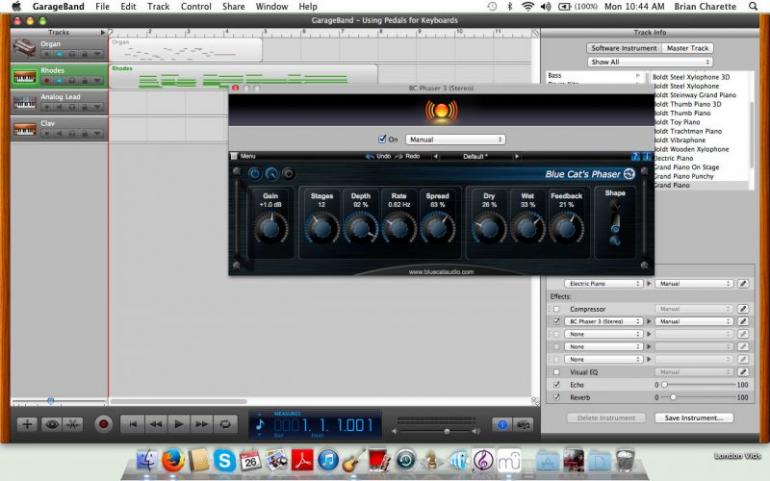
Electric piano sounds great with phaser! In the old days people would hook up a Mark 2 Rhodes to an MXR Phase 90. Listen to the classic track "Just The Way You Are" by Billy Joel to hear this sound. We've used a more modern version in our example that gives a very unusual shimmer to the Rhodes sound. Our phaser has a stages setting that defines the amount of steps the filter takes to open and close. Depth is how wide the oscillator will travel. We've set ours pretty high which causes the warble in our sound. Rate is how fast the filter opens and closes. We've chosen a sign shape with a low feedback to have the warble but with subtlety.

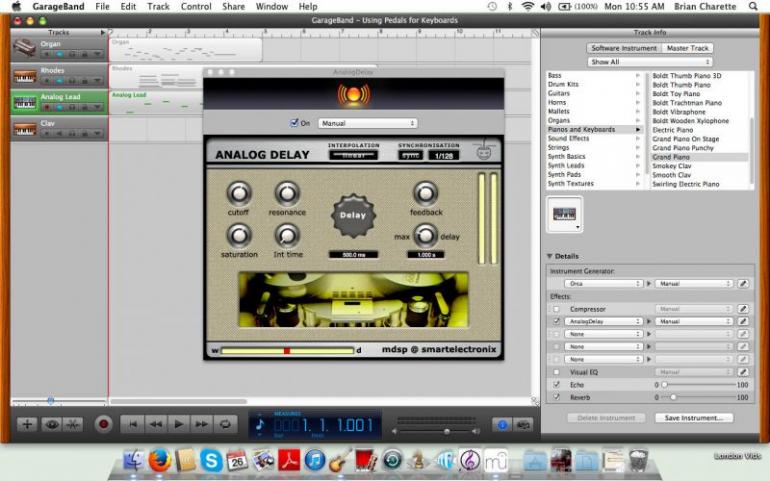
Analog Delay creates a repeating signal that can be degraded with a filter much like turning down the cutoff frequency on an analog synth. Our cutoff here is set somewhere near the middle so the signal slowly morphs as it decays. we set the amount of delay in the middle so we get a few repeats. I also play in time with the repeats to create a rhythmic figure. On plugins you can lock the pedal to tempo; on the real thing you have to turn the time knob and use your ears to get it close. The delay sounds great on this aggressive lead sound. Use this color for an interlude between to verses for a cool "hook"

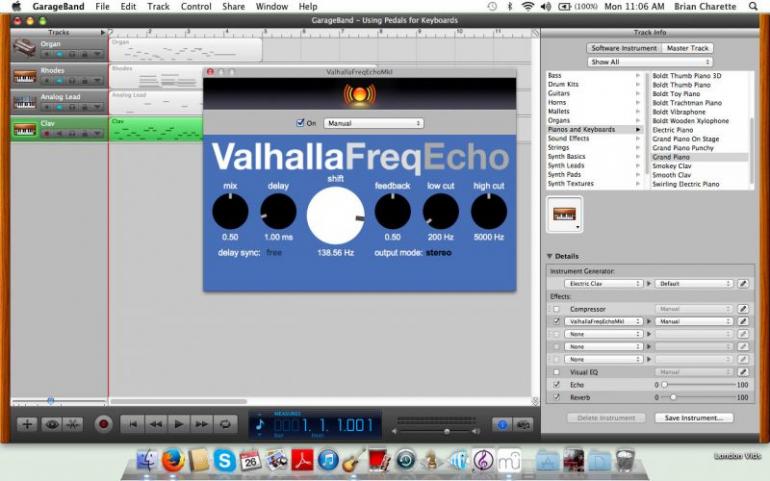
A ring modulator uses amplitude modulation by multiplying two signals, where one is usually a sine wave. Ring modulation is key specific and certain frequencies or notes make very unusual sounds jump out on certain notes. Our plugin here just has a frequency knob that's set to 138.56 HZ. We play some C pentatonic lines that sound cool. On the C and Eb notes you can really hear the mod. Check out Pete Cosey's sounds on Mile Davis' Agharta to get an idea how to use this effect.


